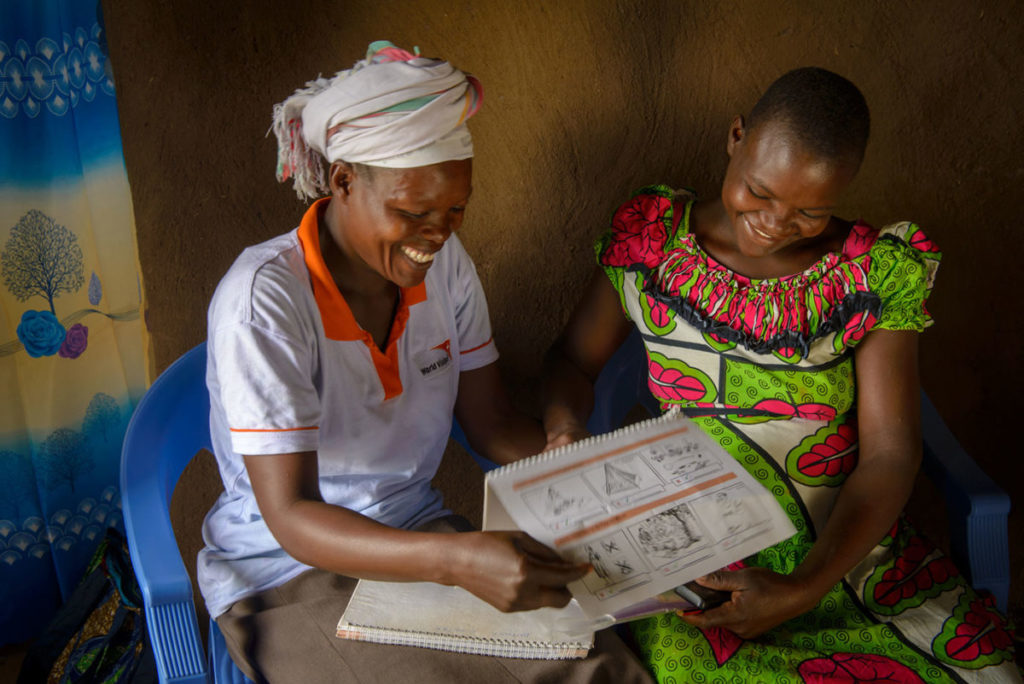This week, USAID released the third annual report, Acting on the Call: Ending preventable child and maternal deaths. Nearly 300,000 women die each year from pregnancy and childbirth, but the good news is that we have a plan. In 2014, the first Acting on the Call report laid out a roadmap – save 600,000 women’s lives by 2020 and the lives of 15 million children; end preventable maternal, newborn, and child deaths by 2035. The key to doing this is to scale up simple sustainable solutions that have been proven to work, including ensuring every mother has at least four prenatal care visits, children are exclusively breastfed until they are six months old, that households use bed nets, and that there is access to clean water. If you have advocated for the Reach Act, you have been a part of making this happen! If passed, this bill will help to accelerate progress and reinforce the 2035 goal.
The 2016 report focuses on equity – giving everyone fair opportunity to realize the full potential of good health, no matter where they live. A mother and child’s future should not be determined by their proximity to a health clinic or if there are roads to reach a health clinic. Children should not die before their fifth birthday because there is no access to clean water or sanitation. Children in rural areas, countries in conflict, or who are girls should not be bound by these factors when it comes to basic health needs.
I am currently in Kenya, one of 25 priority countries listed in the report, in Kisumu. While Kisumu is Kenya’s third largest city, you can drive about 30 minutes and find yourself in rural countryside, with people bringing cattle to market and children carrying water along the street. The Bonde dispensary – a state run clinic, serves over 7,000 people. The maternity ward is two beds and only open during the day. If a mother is in labor or needs to visit and she is too far away, the clinic is closed, or there is not enough staff or beds – her health could be jeopardized. Being required to travel long distances, often on foot, can discourage mothers from receiving prenatal care. Thankfully, groups of Community Health Volunteers (CHVs) are reaching mothers in the most difficult to reach places.
Trained at Bonde Dispensary with the help of World Vision, 17 CHVs serve 19 villages – on foot. They reach mothers who have suffered heartbreak and loss with education and hope. This week, I met families who did not understand why their children were dying, or why a mother’s health was waning, until a CHV came to their home to provide guidance and to educate the family about simple strategies to improve and preserve health. CHVs are men and women elected to serve by the villages from which they are from. Above, CHV Banter and Susan have a visit before Susan prepares to give birth – in just two weeks! She tells us she expects a girl, it is what she feels in her heart.
Banter has been a blessing to the family. Susan has a son who is a little over 1 year old. When she became pregnant again, she was unable to continue to breastfeed him and became worried about his health and nutrition. Banter helped her to find foods so he could have a balanced diet and thrive, as well as talked to Susan about how to space her next pregnancy so her newborn will have the full benefits of breastfeeding. She knows it is important to give birth in the clinic and was able to arrange for transportation. Susan also learned about warning signs to look for throughout her pregnancy, the importance of immunizations for her children, and how to track her children’s growth. Banter makes sure the home has a bed net to help prevent malaria and is available to answer any questions.
CHVs is just one strategy for reaching mothers and children in the hardest to reach places who are the poorest of the poor. In 2016, Acting on the Call asks, “how are we addressing the root causes of inequities?” This includes how widespread access is, how new interventions are distributed, and how community-based approaches are being used to reach the most vulnerable. Being on the ground in Kenya this week, I have seen that CHVs are a critical part to ending preventable maternal, newborn, and child deaths – but just one part. We must come together as a voice for mothers and children no matter where they are or what their circumstances may be.
Photo: Banter and Susan review the picture book that helps to educate mothers about the best way to care for herself and her children. © 2016 World Vision/ photo by Laura Reinhardt


